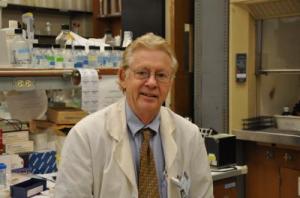 Vitamin D surfaces as a news topic every few months. How much daily vitamin D should a person get? Is it possible to have too much of it? Is exposure to the sun, which is the body's natural way of producing vitamin D, the best option? Or do supplements suffice?
Vitamin D surfaces as a news topic every few months. How much daily vitamin D should a person get? Is it possible to have too much of it? Is exposure to the sun, which is the body's natural way of producing vitamin D, the best option? Or do supplements suffice?
In the July 2010 issue of Endocrine Today, a monthly newspaper published by SLACK, Inc., to disseminate information about diabetes and endocrine disorders, Anthony Norman, a distinguished professor emeritus of biochemistry and biomedical sciences and an international expert on vitamin D, notes that half the people in North America and Western Europe get insufficient amounts of vitamin D.
"Elsewhere, it is worse," he says, "given that two-thirds of the people are vitamin D-insufficient or deficient. It is clear that merely eating vitamin D-rich foods is not adequate to solve the problem for most adults."
Currently, the recommended daily intake of vitamin D is 200 international units (IU) for people up to 50 years old; 400 IU for people 51 to 70 years old; and 600 IU for people over 70 years old.
"There is a wide consensus among scientists that the relative daily intake of vitamin D should be increased to 2,000 to 4,000 IU for most adults," Norman says. "A 2000 IU daily intake can be achieved by a combination of sunshine, food, supplements, and possibly even limited tanning exposure."
While there is now abundant data on vitamin D and its benefits, Norman believes there is room for more study.
"The benefits of more research on the topic justifies why this field of research deserves additional governmental funding," he says. "Already, several studies have reported substantial reductions in incidence of breast cancer, colon cancer and type 1 diabetes in association with adequate intake of vitamin D, the positive effect generally occurring within five years of initiation of adequate vitamin D intake."
Because vitamin D is found in very few foods naturally (e.g. fish, eggs and cod liver oil) other foods such as milk, orange juice, some yogurts and some breakfast foods are fortified with it. The fortification levels aim at about 400 IU per day.
Norman, who holds the title of Presidential Chair in Biochemistry-Emeritus, has been researching vitamin D for nearly 50 years. In 1967, his laboratory discovered that the vitamin is converted into a steroid hormone by the body. Two years later, his laboratory discovered the vitamin D receptor (or VDR), an essential receptor for the steroid hormone form of vitamin D that is present in more than 37 target organs of the body that respond biologically to the vitamin.
"There is now irrevocable evidence that receptors in the immune, pancreas, heart-cardiovascular, muscle and brain systems in the body generate biological responses to the steroid hormone form of vitamin D," he says.

 Previous page
Previous page Back to top
Back to top







